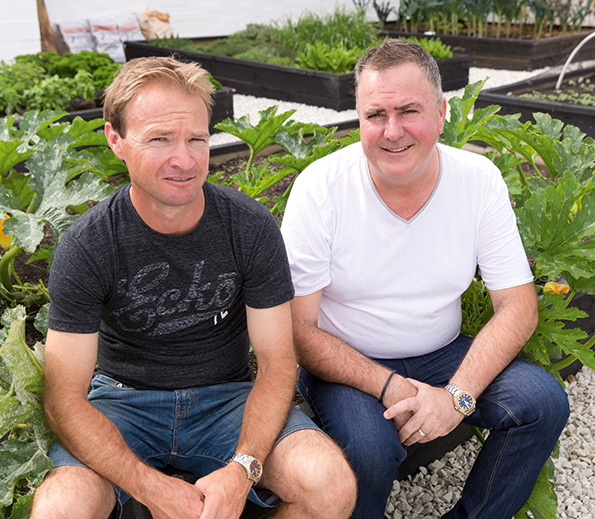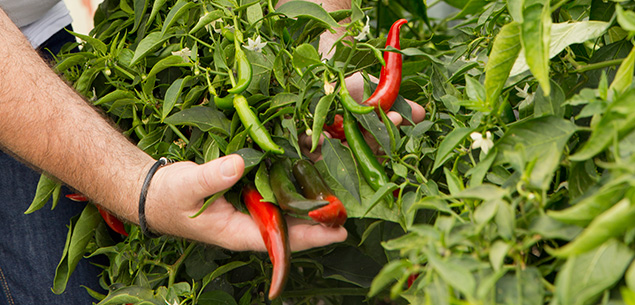Growing chilli at home means you’ve always got a delicious way to give your meals that extra five percent magic.
Although they only stay fresh for so long in the kitchen, the great thing about chilli is you can dry them out and they will keep for ages. The ones I have at home at the moment are a few weeks old, but in six months’ time they’ll still be alright to use!
I throw them in everything – well, not literally everything – but anything I want a bit of heat in. I’ve even been known to have them for breakfast!
I probably shouldn’t tell you what I had for breakfast this morning, but I will – I made a stir-fry with chilli and onion, cooked in a little oil, to which I threw in some leftover rice and an egg. Often when I come home, I’m strapped for time, which is when chilli comes in handy for making an on-the-go meal, such as a noodle soup.
Cook up a simple stock – I like to use a vegetable one if I’m adding a meat such as prawns to it – then chop up a bit of chilli and throw it in with the stock. Add vermicelli and the prawns. I also like to grab some fresh coriander out of the garden and add it in at the very last minute.
It’s literally less than two minutes to put together, then all you need is a big ladle! Chilli and coriander are just a magic combination.
You’re not limited to prawns with this one either – it just depends on what you have in your fridge. You can put in leftover chicken, or thinly sliced beef. Just replace the vegetable stock with a beef one.
This is a quick and easy meal that is simply bursting with hot, spicy flavour. Guaranteed to impress the family!

Simon Gault with his gardener Ken.
Simon’s gardener Ken says:
“Most varieties of chillies need a long growing period to produce a good crop, so it is important to start early. I would sow seeds indoors in August, then plant out four to six weeks later. They are frost tender so need protection until the cold snap is over. Chilli plants are best planted when soil temperatures are between 18 and 35ºC. Allow for a 50cm spacing. A foliar feed of nitrogen will give them a good boost. They might also need staking as they get bigger. If you want to get a head start without having to look after seedlings, garden centres usually have a good selection around October.
“If you had plants in this season and the leaves yellowed or curled prematurely, it is likely because of a lack of nitrogen. Over or under watering can reduce nitrogen availability to the plants roots. And make sure they are planted in well prepared loose soil that has heaps of nitrogen in it. Blood and bone or a seaweed or fish-based fertiliser work well.”




